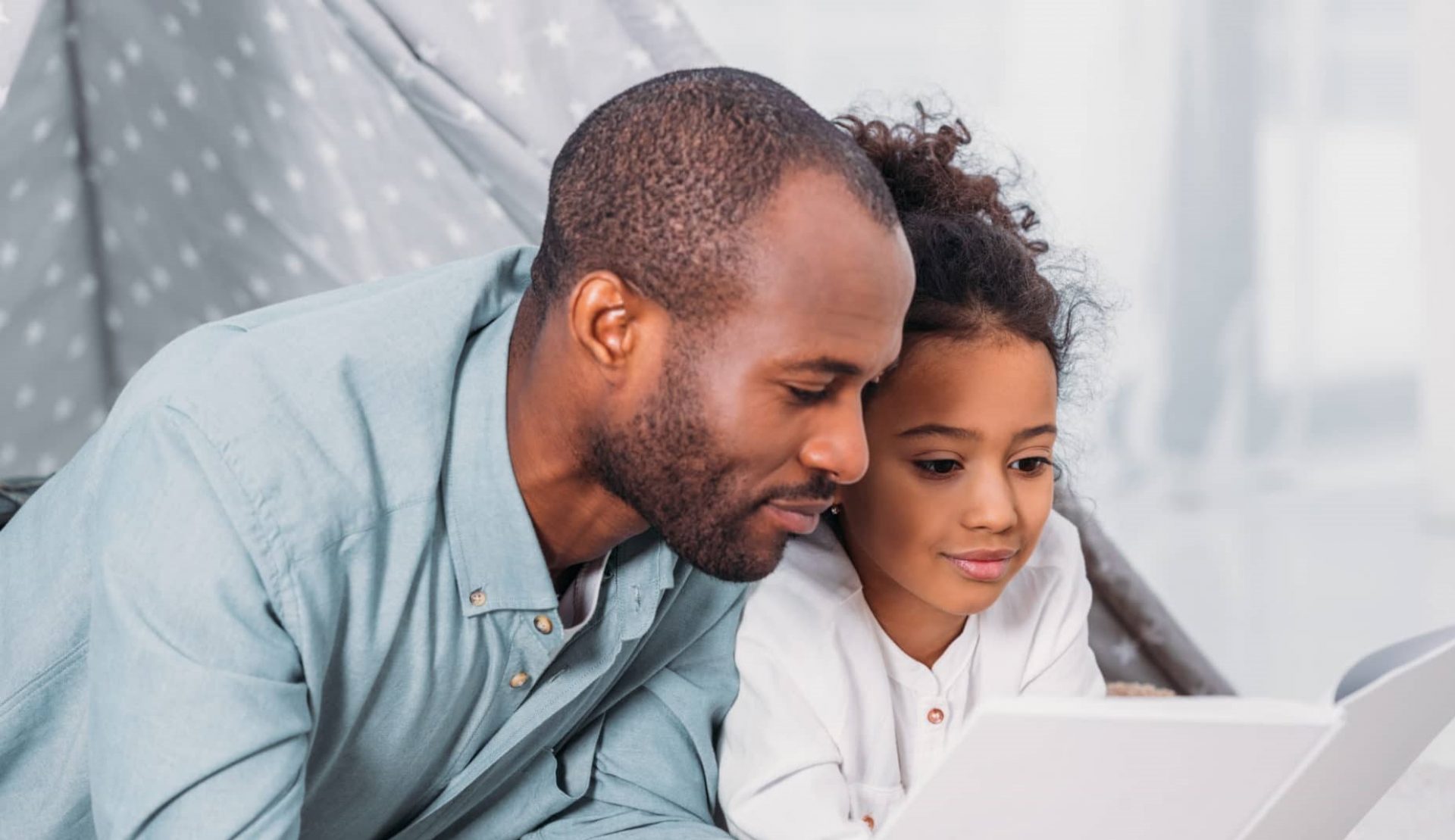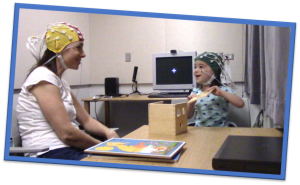Emotion Regulation Visits
As young children develop new skills, it is not uncommon that young children become upset or irritable in new situations and as a result become frustrated and experience tantrums. For most young children, these behaviors or moods are developmentally appropriate and mild. For other children, these may be harder to deal with and may disrupt home and family quality of life. In this study, we hope to identify early signs of when these behaviors, emotions, and language impact young children’s development and when it is appropriate to intervene.
If enrolled in the study, you and your child will complete the emotion regulation visit, in person once each year. This component of the study is separated into the below two parts:
Visit Components
Child Activities
The first part is the child activities, where we will do activities with your child, and you and your child will do activities together. This part takes approximately two and a half to three hours and will be completed in the Developmental Mechanisms lab at Northwestern University in Chicago. These activities will help us learn directly about your child’s mood and behavior as well as how they respond to different situations.
During the child activities, we will have water, coffee, tea, and snacks for you and your child at any time you would like. Feel free to bring any additional food or meals to your visit, especially if your visit runs across lunchtime. You are more than welcome to eat your lunch during the visit. Some of our activities involve food, such as Snack Pack pudding, Gerber Graduate Puffs, Cheerios, and Goldfish. Please let us know if your child has any allergies or dietary restrictions.
Feel free to wear comfy clothes. Some activities will involve some messy play and you will also be playing with your child at different points. We have diapers and wipes here in our lab that you can use for your child during your visit.
Interviews
The second part is the interviews, which take approximately two hours. You will complete the interviews over the phone, over Skype or Facetime or at the Developmental Mechanisms lab at Northwestern University.
Language Visits
Visit Components
Eye Tracking
An eye tracker is a camera that is attached to a laptop and tracks your child’s eye movement as they hear language and look at pictures of items that are common in the household (cookie, shoe, baby, dog). Your child will also see some funny new objects!
Brainwaves using EEG
What is EEG?
EEG is used to measure the natural electrical activity in the brain. When neurons in the brain communicate, they generate tiny electrical signals. When you or your child wear an EEG cap, it senses these signals. This is the same type of technology used for an EKG measuring the heart’s electrical activity.
Why EEG?
EEG is ideal for working with young children because it allows us to record brain activity while you engage with your child. These recordings are an important way for us to understand how you and your child’s brain relate to behavior and development, and how you communicate with their child. Mom and child both where special fabric caps that hold the EEG sensors. We place a small amount of saltwater gel similar to hair gel on each sensor to carry the signal from the head up to the sensors.
Is EEG Safe?
EEG is very safe. It is completely non-invasive, meaning there are no medications, no needles, and no radiation or x-rays involved. In our study, We are happy to answer all of your questions about safety.
What happens during the EEG visit?
EEG is part of the language visit. We will work closely with you to determine the best time to have you and your child come in for your visit.
You and your child will meet the research team. Our research team will help you and your child get comfortable and familiarized with our recording room. You and your child will sit together at a table. We offer toys and videos while you and your child while we put on your EEG caps. We usually place the cap on Mom’s head first, so the child can see how it works, and then place the hat on your child’s head. Once both Mom and child are wearing their caps, we will begin the recording. During the recording, you will watch videos and play with your child; this takes about 50 minutes. A member of the research team will be with you and your child in the EEG recording room at all times. The other team members will be in the control room next door to run the computer that collects the recording.
What happens if my child or I don’t want to participate in EEG?
We want to make sure that you and your child have an enjoyable experience and will do our best to accommodate both of your needs. We truly value your time and participation and understand that not all children are comfortable wearing the cap. If you or your child have your in braids that can’t be removed for the recording and would make washing the gel out difficult, we are happy to work with you to find an option that would work.


